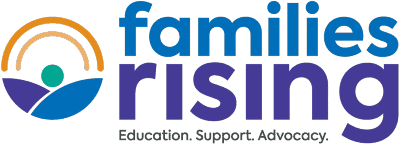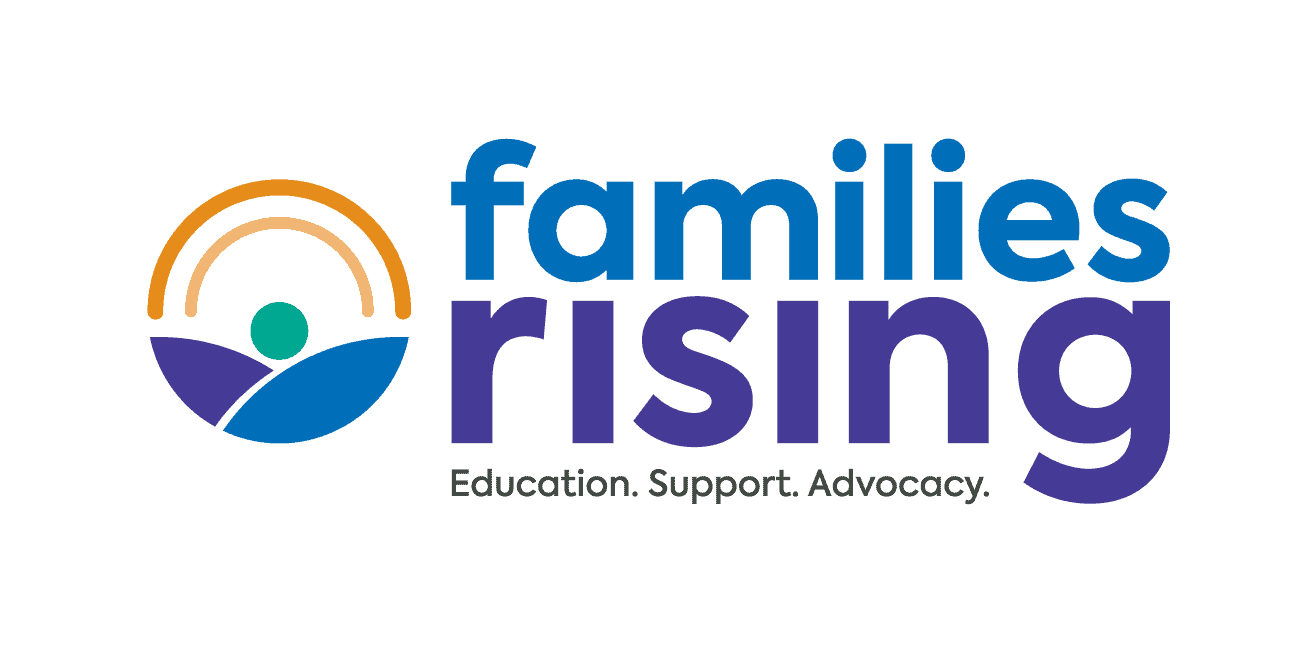from Fall 2006 Adoptalk
How seriously is methamphetamine (meth) use affecting child welfare? The answer varies by state and region, but Congress, when it reauthorized the Safe and Stable Families Program in September, agreed to spend $40 million on the problem in fiscal year 2007. That’s how much states—through $500,000 to $1 million grants—will have to address child welfare problems caused by addiction to meth and other drugs.
Once viewed as a crisis for only western states, meth use has been steadily tracking east in the past decade. Addiction and attendant family problems are now firmly anchored in the Midwest and further south, and in many states, foster care entries are rising as a result. In turn, more foster parents and other caregivers are parenting children who have been exposed to meth in utero or in their environment. The task can be overwhelming at times, but when parents know what to expect, have chances to learn more about their children, and receive adequate support, child outcomes can vastly improve.
The Scope of the Problem
“Meth has emerged as nothing short of a weapon of mass destruction,” declared Marion County Oregon’s district attorney in May. Home to the state’s capitol city, the county used to see fewer than 40 children entering care each month, but it now takes in at least 100 children per month.
In Missouri, about 12 percent of children in state care were removed from homes where meth was being made, sold, or used in 2005. In Montana, where drug abuse plays into 66 percent of foster care placements, meth is the drug more than half the time. Released by the Department of Public Health and Human Services, statistics indicate that meth poses nearly as big a child welfare problem as alcohol.
Parenting Meth-Exposed Babies
As meth awareness grows, more hospitals are testing moms and babies for the drug. Positive tests or other signs of use give child protection workers the authority to place babies in foster care or with relatives.
Infants who are exposed to meth in utero have an elevated risk of being born prematurely and developing serious medical and neurological issues—including brain and spinal cord damage, heart defects, skeletal abnormalities, and improper intestinal development. Even full-term newborns tend to weigh less and have smaller heads than their peers.
In April, Dr. Rizwan Shah—a pediatrician who has been studying meth-exposed children since 1993—released findings from a study that showed:
- nearly 20 percent of meth-exposed infants fell below the 10th percentile for weight;
- more than one-third experienced feeding problems, often due to a poor suck or swallow reflex;
- 25 percent of pregnant meth users studied delivered babies pre-term; and
- breathing problems, including sleep apnea, as well as over- or under-sensitivity to stimulation were common.
Before welcoming a newborn home, caregivers should learn if he was exposed to alcohol or drugs besides meth. They should also learn infant CPR and be trained on equipment—like an apnea or heart monitor or feeding tube—that comes home with the baby. Once home, caregivers should closely watch for any signs of distress that might signal a breathing problem. Some other ideas:
- Monitor the baby’s sensitivity to different stimuli. If he complains when a bright light is turned on, keep lighting softer. If he kicks off his blanket, bed him down in a one-piece sleeper.
- If hypersensitivity to light or sound keeps the baby from sleeping, keep her sleeping environment dark and quiet.
- If the baby is constantly fussy, consider “wearing” the baby in a soft carrier. Because babies are sensitive to caregivers’ emotions, close proximity to a consciously tranquil and caring parent can ease distress and promote bonding.
- By the same token, avoid passing meth-exposed babies around to strangers. Seeing new face after new face can be over-stimulating and disconcerting.
- Introduce changes (noise, light, smells, environment, people) gradually.
- Consult with the baby’s pediatrician before giving any medication, particularly any drug with ephedrine or pseudoephedrine, a component of meth.
One pound, 14 ounces at birth, Madilyn was born with fluid on her brain, cerebral palsy, a potentially blinding eye disorder, and chronic evolving lung disease. Doctors never expected her to walk, talk, eat independently, or take in stimulus. But her adoptive parents, Alissa and Sean, were firmly committed to Madilyn and even worked to bond with her during hospitalizations. Alissa tells parents:
- Impress upon hospital staff that families are part of the treatment team.
- Insist on being present during medical procedures. Your child needs to know you will not abandon her during these stressful times.
- To avoid further trauma, teach medical staff to avoid forcibly holding the child down or poking her with needles any more than is absolutely necessary.
Yasmin* weighed one pound, 13 ounces when her mother, Angelica, gave birth at 26 weeks. She struggled with chronic lung disease, as well as a partially detached retina, defective heart value, paralyzed vocal chord, and severely weakened immune system. Yasmin spent nearly three months on life support, and had a feeding tube for more than two years. She was also hospitalized 14 times before age two.
Angelica reports that the hardest thing was dealing with the medical problems, machines, and therapy techniques. She also struggled with often paralyzing guilt for having caused her daughter’s problems. A recovering meth addict, Angelica got the best support—useful caregiving tips and emotional assistance—from caring social workers and Yasmin’s former foster parent. To other parents, she says:
- Learn all you can about how drug exposure affects infants.
- Focus on the day-to-day tasks of helping the child so you don’t get overwhelmed by ongoing problems.
- Join a parent support group with experienced infant caregivers.
- Don’t try to do it on your own; invite service providers into your home.
- Find a mentor who has first-hand experience dealing with premature infants.
Parenting Meth-Exposed Children
Based on her research, Dr. Shah says 6 to 18 months of age is a relatively symptom free time for meth-exposed babies. While this is less true for medically fragile babies like Alissa’s and Angelica’s, early breathing and excessive fussing problems can dissipate as the meth-exposed child approaches his second birthday.
As the toddler matures, however, parents may notice continuing problems with sensory integration dysfunction (a child’s inability to process sensory input correctly), and more trouble with paying attention, controlling anger, and having aggressive outbursts. Once the child enters a more structured school setting, learning difficulties may become evident.
Overall, behaviors are consistent with those exhibited by many foster children, so caregivers must be ready to advocate for the child at school and seek other services that can help each child, given his specific challenges, to manage life more effectively. For example:
- If a child has a sensory integration dysfunction, track his behavior and note what may have provoked the behavior. If a child rejects certain clothing, fabric, or food textures, he may be hypersensitive to touch. An aversion to loud noises would signal auditory hypersensitivity, and conversely, under-sensitivity to body movement could provoke a child to strive for perpetual motion.
- When you find out what causes certain behaviors, try to avoid the triggers and teach others to do the same. The child might also benefit from a sensory integration evaluation and occupational therapy. When treated at a young age, some children can gain better control over their sensory perceptions.
- Because attention deficit hyperactivity disorder-like symptoms can stem from sensory integration problems, check that possibility before seeking behavioral therapy or medicine. If ADHD is diagnosed, practice positive reinforcement, seek classroom accommodations, and consider programs where the child can have more individual attention.
- If speech delays are causing temper tantrums, introduce sign language.
- Learn to decipher messages behind behaviors. Children who prolong the bedtime ritual, for example, may unknowingly fear abandonment. When you know why your child is acting out, it is much easier to be objective and keep situations from escalating.
- Bring the whole family to therapy. Your child’s issues must be addressed within the context of living with you.
- Consider options for schooling. Alissa, whose two youngest children were exposed to meth in utero, is home schooling them. She knows that the children, who are prone to infections and have trouble focusing, are much less likely to catch colds at home, will be spared damaging labels like bad or stupid, and will not pick up undesirable behaviors from other kids at school.
Environmental Meth Exposure
Legislation controlling the sale of cold medicines with a meth-making ingredient has diminished the appeal of home meth-labs. Drug use, however, fueled by meth superlabs in Mexico, continues to rise. Unfortunately, children who live with meth-addicted parents, in addition to possible in-utero drug exposure, may be subject to drug fumes; the violent, paranoid, and libidinous highs of meth users; and neglect in the wake of each crash.
Whether they are in a dead sleep or planning their next high, meth-addicted mothers and fathers are disinclined to take care of themselves, much less their children. Dr. Richard Delaney, a psychologist with expertise in child abuse and neglect, says many children whose parents use meth are essentially like orphans. Though they live with a parent, the parent is largely unavailable.
To survive, these children learn to meet their needs without depending on an adult. Adults in their life are not nurturing or trustworthy, and that view will not change overnight when they find themselves in a new family. In fact, depending on how old the child is and how long he has been fending for himself, bonding with a new parent may not be anything he even understands or seeks.
Services for these children, as for other children in or adopted from foster care, must be provided according to each child’s needs. And, as Dr. Delaney asserts in Fostering Changes, “the most impacting, radical therapeutic relationship for troubled foster and adoptive children is the foster or adoptive family itself.”
The Bottom Line
As states confront the rising tide of children coming from meth-addicted parents, they must offer caregivers—foster/adoptive/birth parents, and relatives—appropriate training and support. A parent who knows his child’s history and prognosis, and has resources to meet her unique needs, can considerably improve outcomes for the child and the family.
Finally, despite troubles that can plague children exposed to meth, there is hope. According to Dr. Shah’s early research, some children who are exposed to meth in utero catch up with their peers by grade school, especially if their birth mothers stopped using before the final trimester. In addition, while premature babies may never fully outgrow some of their health issues, Alissa and Angelica are happy to report that their girls, one seven, one six, are living a much more normal life than anyone ever dreamed they would.
* Names in this story are changed to protect the family’s privacy.


